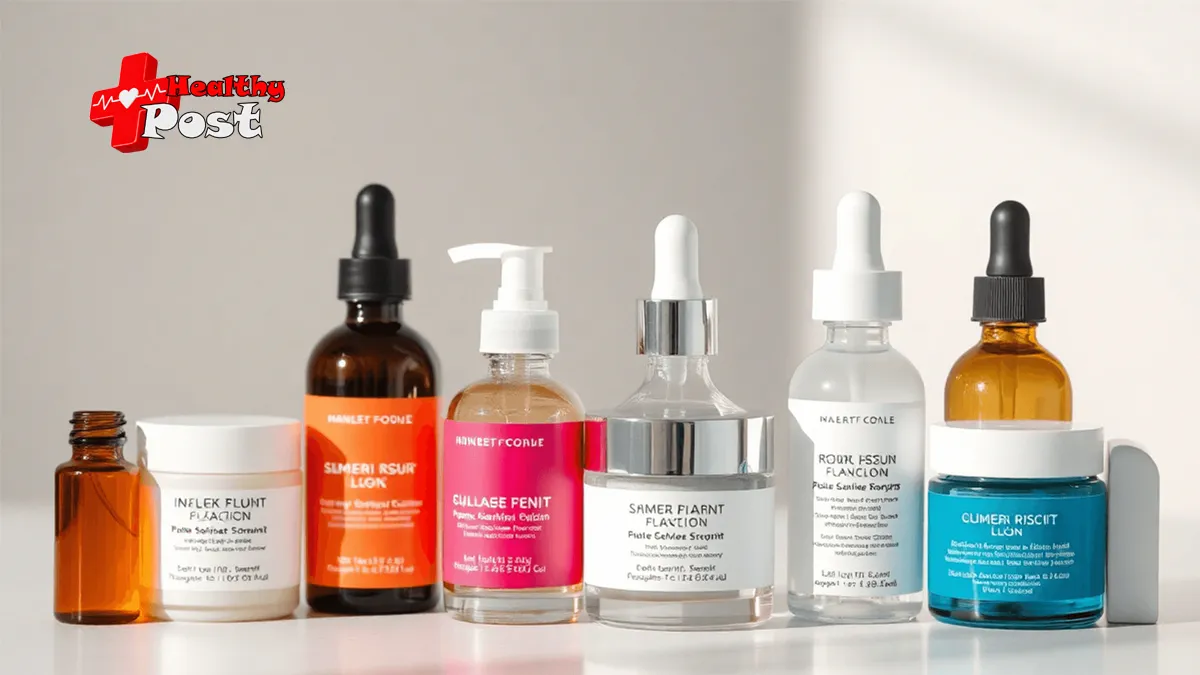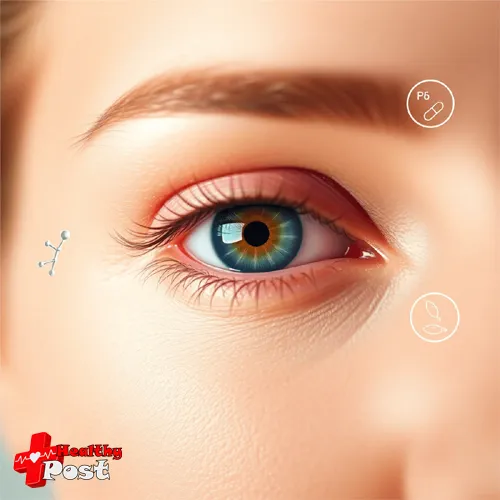
5 Powerful Solutions for Orbital Fat Loss That Actually Work
Are you looking for effective ways to treat orbital fat loss? This common condition can cause a sunken appearance around your eyes, making you look tired or older than you actually are.
The loss of fat padding around your eye area affects how light and shadow interact with your face. These changes can impact your overall facial appearance and lower your self-confidence in social and professional situations.
After extensive research, we have compiled a list of five proven solutions that deliver real results for orbital fat loss:
- Adjustments in medical treatment targeting underlying causes
- Advanced topical therapies using peptides
- Professional techniques for restoring volume
- Innovative regenerative treatments
- Surgical options for long-lasting results
Each solution has its own unique benefits depending on your specific needs and goals. Some methods provide quick restoration of volume, while others focus on long-term tissue health and prevention.
Curious to know which approach might be most effective for you? Let’s delve into these powerful solutions that can help restore the natural contours of your eyes and rejuvenate your appearance.
For more information about the basics of orbital fat loss, refer to this informative guide from the American Academy of Ophthalmology.
Understanding Orbital Fat Loss
The natural aging process plays a key role in orbital fat loss. As we age, our facial fat pads shrink and shift position, creating hollow areas around our eyes.
Medical Conditions That Cause Orbital Fat Loss:
- Thyroid disorders
- Autoimmune diseases
- Chronic inflammatory conditions
- HIV/AIDS-related facial wasting
- Genetic predisposition
- Cervicobrachial Syndrome
Medications Known to Trigger Fat Loss:
- Prostaglandin analogs (used in glaucoma treatment)
- Eyelash growth serums containing bimatoprost
- Some anti-aging treatments
- Certain steroid medications
The visual impact of orbital fat loss creates noticeable changes in facial appearance. A sunken eye appearance develops as fat pads diminish beneath the eyes.
Common Visual Changes:
- Deep tear troughs
- Visible blood vessels
- Dark circles under eyes
- Exposed bone structure around eyes
- Hollow temple areas
- Tired or aged appearance
The severity of these changes varies among individuals. Some people notice mild hollowing, while others experience dramatic changes in their facial structure.
Risk Factors That Speed Up Fat Loss:
- Rapid weight loss
- Excessive sun exposure
- Smoking
- Poor nutrition
- Dehydration
- High-stress levels
Early signs often start with subtle changes in the mirror. You might notice shadows forming under your eyes or your makeup applying differently than before.
Signs to Watch For:
- Changed eye shape
- New shadows under eyes
- Makeup settling differently
- Visible orbital rim
- Increased eye bag prominence
Understanding these patterns helps identify orbital fat loss early. Quick recognition allows for faster intervention and better treatment outcomes.
1. Stopping Medications That Cause Orbital Fat Loss
Certain medications, such as prostaglandin analogs, can directly cause fat loss in the eye area. These compounds are commonly found in eyelash growth serums like Latisse and work by breaking down fat cells around the eyes.
Effects of Causative Medications on Orbital Fat
The impact of these medications on orbital fat includes:
- Reduction in fat pad volume
- Changes in fat cell structure
- Decreased support for orbital tissues
- Visible hollowness under the eyes
Discontinuing these medications is an important first step towards potential recovery. The timeline for improvement can vary from person to person:
- 3-6 months: Initial signs of stabilization
- 6-12 months: Possible partial restoration of fat
- 12+ months: Maximum natural recovery potential
Factors Influencing Recovery After Stopping Medications
Some patients may notice gradual improvements after stopping prostaglandin-based products. However, the rate of recovery can depend on several factors:
- How long the medications were used
- Individual healing response
- Age and metabolism
- Overall health of the tissues involved
Alternative Options for Eyelash Enhancement Without Risk to Orbital Fat

If you’re looking for alternatives to enhance your eyelashes without risking orbital fat loss, consider these options:
- Peptide-based growth serums
- Biotin supplements
- Natural oils such as castor or coconut oil
- Gentle lash conditioning treatments
Seeking Professional Guidance for Safe Discontinuation of Medications
It’s important to consult with a medical professional who can help you create a personalized plan for safely discontinuing these medications. They will monitor your progress and suggest supportive treatments that can enhance your recovery.
Regular check-ups with your healthcare provider will allow them to track any improvements and make necessary adjustments to your treatment strategies. Additionally, taking photos before stopping the medication can serve as valuable reference points for measuring your progress over time.
2. Topical Treatments with Peptides and Retinoids
Specialized eye creams offer a gentle yet effective approach to managing orbital fat loss. These targeted formulations contain active ingredients that work at the cellular level to improve skin health around the eyes.
Key Benefits of Peptides:
- Boost collagen production
- Strengthen skin structure
- Reduce fine lines
- Improve skin firmness
- Support tissue repair
Power of Retinoids:
- Speed up cell turnover
- Enhance skin thickness
- Stimulate new blood vessels
- Increase moisture retention
- Support natural fat pad health
The best eye creams combine both peptides and retinoids in specific concentrations. These ingredients work together to create visible improvements in the orbital area.
Application Tips for Best Results:
- Use twice daily
- Apply with ring finger
- Tap gently around orbital bone
- Wait 2 minutes before other products
- Start with lower concentrations
Many users notice positive changes within 8-12 weeks of consistent use. The skin appears firmer, plumper, and shows reduced signs of hollowness.
Product Selection Guide:
- Look for medical-grade formulations
- Check for peptide complexes
- Choose retinol percentage based on skin sensitivity
- Avoid fragrances and harsh chemicals
- Select products with clinical testing
Remember to patch test new products on your inner arm before applying them around your eyes. This helps prevent potential irritation or allergic reactions.
3. Dermal Fillers and Fat Grafting Techniques
Dermal fillers offer a quick solution for volume restoration in the orbital area. These injectable treatments can fill hollow areas beneath the eyes, creating a refreshed appearance.
Popular dermal filler options include:
- Hyaluronic acid fillers
- Calcium hydroxylapatite fillers
- Poly-L-lactic acid fillers
The treatment takes about 30 minutes. Results show up right away and can last 6-18 months based on the type of filler used.
Fat grafting brings a natural approach to orbital fat loss treatment. This method takes fat from other body areas and places it under the eyes.
The fat grafting process involves:
- Harvesting fat cells from donor sites like thighs or abdomen
- Processing the fat to isolate healthy cells
- Careful injection into the orbital area
Microsurgical fat transfer uses special techniques to ensure fat cells survive in their new location. This method can create lasting results.
Benefits of fat grafting:
- Uses your own tissue
- Creates natural-looking results
- Can last many years
- Improves skin texture
The choice between fillers and fat grafting depends on several factors:
- Your goals
- Budget considerations
- Recovery time preferences
- Desired result duration
Both treatments need skilled doctors for safe application. Regular touch-ups help maintain the results of dermal fillers. Fat grafting might need one or two sessions for ideal outcomes.
4. Laser Treatments and Platelet-Rich Plasma Therapy
Laser treatments offer a non-surgical path to combat orbital fat loss through advanced tissue rejuvenation techniques. Different types of lasers target specific layers of skin to boost natural healing:
- Fractional CO2 Laser: Creates tiny channels in the skin, triggers natural collagen production, improves skin texture around eyes, with results visible after 2-3 sessions.
- Erbium YAG Laser: Gentle approach for sensitive eye area, minimal downtime, helps tighten loose skin, reduces fine lines.
Platelet-Rich Plasma (PRP) therapy harnesses your body’s natural healing powers to restore orbital tissue health:
- Blood is drawn from your arm
- Platelets are separated through centrifugation
- Concentrated platelets are injected around eyes
- Growth factors stimulate tissue repair
The combination of laser treatments with PRP creates a powerful synergistic effect:
- Enhanced collagen production
- Improved blood circulation
- Better tissue quality
- Natural-looking results
- Minimal risk of allergic reactions
Most patients need 3-4 sessions spaced 4-6 weeks apart for optimal results. The effects can last 12-18 months with proper skincare maintenance.
Treatment success depends on:
- Your age
- Skin condition
- Extent of orbital fat loss
- Following post-treatment care instructions
These treatments work best when started early, before severe orbital fat loss occurs.
5. Surgical Interventions for Advanced Cases
Surgical options are powerful solutions for advanced cases of orbital fat loss. These procedures offer hope when non-surgical treatments fail to deliver desired results.
Common Surgical Approaches:
- Lower Lid Blepharoplasty – This surgery reshapes fat pads and removes excess skin around the eyes
- Midface Lift – Lifts and repositions descended cheek tissues to restore youthful contours
- Deep Plane Facelift – Addresses multiple layers of facial tissue for comprehensive rejuvenation
Soft tissue repositioning works by moving existing fat pads to fill hollow areas. A skilled surgeon can redistribute tissue to create natural-looking results that last years.
Advanced facelift techniques target deeper facial layers to correct:
- Sunken eye appearance
- Visible bone structure
- Deep tear troughs
- Sagging cheek tissues
Recovery from surgical interventions typically takes 2-3 weeks. Patients see initial results once swelling subsides, with full results visible after 3-6 months.
Important Considerations:
- Choose a board-certified facial plastic surgeon
- Discuss realistic expectations during consultation
- Follow post-operative care instructions carefully
- Plan for adequate recovery time
- Consider combining procedures for optimal results
These surgical options require careful evaluation of each patient’s unique anatomy and goals. Success depends on proper patient selection and surgical technique.
Learn more about facial plastic surgery procedures
Preventive Measures and Supportive Strategies for Maintaining Orbital Fat Health
A balanced diet rich in essential nutrients plays a key role in maintaining healthy orbital fat tissue. Here’s what you need to know:
Vital Nutrients for Orbital Fat Health:
- Omega-3 fatty acids support tissue elasticity
- Vitamin C aids collagen production
- Vitamin E protects cells from damage
- Zinc helps tissue repair and regeneration
Hydration Tips:
- Drink 8-10 glasses of water daily
- Limit alcohol and caffeine intake
- Use a humidifier in dry environments
- Apply hydrating eye gels
Gentle Eye Care Practices:
- Remove eye makeup with soft, downward strokes
- Use fragrance-free, hypoallergenic products
- Avoid rubbing or pulling at the eye area
- Protect eyes from UV rays with sunglasses
Lifestyle Adjustments:
- Get 7-9 hours of quality sleep
- Practice stress management techniques
- Take regular screen breaks
- Use proper lighting when reading
Warning Signs to Watch:
- Sudden changes in eye appearance
- Increased hollowness around eyes
- Visible bone structure around orbital area
- Changes in skin texture or elasticity
Regular eye check-ups help detect early signs of orbital fat loss. A healthcare provider can assess risk factors and recommend personalized preventive strategies based on individual needs.
Conclusion
The journey to address orbital fat loss requires patience and a personalized approach. Each person’s situation differs, making it essential to set realistic expectations for treatment outcomes.
These 5 Powerful Solutions for Orbital Fat Loss offer hope for those seeking improvement:
- Stopping harmful medications
- Using targeted topical treatments
- Exploring dermal fillers and fat grafting
- Trying laser and PRP therapies
- Considering surgical options when needed
Your success depends on choosing the right treatment path with professional guidance. A qualified healthcare practitioner can:
- Assess your specific condition
- Create a tailored treatment plan
- Monitor your progress
- Adjust strategies as needed
Remember: quick fixes rarely provide lasting results. The best approach combines carefully selected treatments with consistent preventive care.
“The path to improvement starts with understanding your options and working with experts who can guide you safely toward your goals.”
Take action today by scheduling a consultation with a trusted medical professional. Your journey to restore orbital volume and regain confidence awaits – backed by proven solutions that actually work.
Find a board-certified oculoplastic surgeon near you
FAQs (Frequently Asked Questions)
What is orbital fat loss and how does it affect facial appearance?
Orbital fat loss refers to the reduction of fat around the eye sockets, leading to a sunken eye appearance and exposure of the bony orbital rims. This condition impacts overall facial aesthetics and can affect self-confidence by creating a tired or aged look.
What are the common causes of orbital fat loss?
Orbital fat loss can be caused by aging, use of certain medications such as prostaglandin analogs (e.g., Latisse), and medical conditions. These factors contribute to visual changes around the eyes including hollowing and tissue thinning.
How can discontinuing causative medications help in managing orbital fat loss?
Certain medications like prostaglandin analogs used for eyelash enhancement may contribute to orbital fat loss. Discontinuing these medications can help manage and potentially reverse the condition by preventing further fat depletion around the eyes.
What topical treatments are effective for supporting skin health in orbital fat loss?
Specialized eye creams containing peptides and retinoids are beneficial for improving skin elasticity and promoting healthy tissue function around the eyes. These topical treatments support skin and tissue health, helping to mitigate the effects of orbital fat loss.
What role do dermal fillers and fat grafting play in treating orbital fat loss?
Dermal fillers restore volume to hollow areas beneath the eyes caused by orbital fat loss, providing a non-surgical option for volume restoration. More invasive procedures like fat grafting or microsurgical fat transfer can offer longer-lasting results by repositioning or replenishing lost fat.
Are there non-surgical options available for rejuvenating tissues affected by orbital fat loss?
Yes, non-surgical treatments such as laser therapies and platelet-rich plasma (PRP) therapy stimulate collagen production and improve the quality of orbital tissues. These options promote tissue rejuvenation without the need for surgery, making them suitable for mild to moderate cases.
